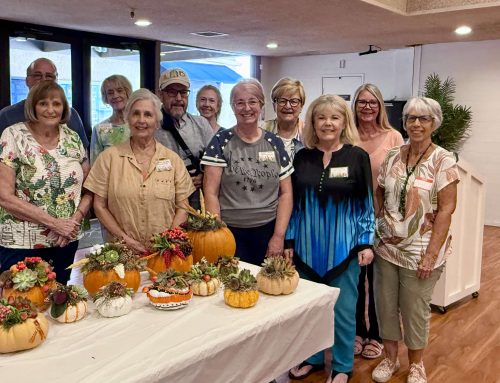Some of the easiest plants to grow in our area are bulbs that require no pre-chilling and don’t have to be dug up and stored. Once planted, you can sit back and enjoy life until they push their slender, pointed leaves through the ground and burst into glorious bloom in spring. In fall, plant bulbs in groups, not rows, to add pops of color to your garden. By placing them in your flower beds, you don’t have to create new beds and save yourself extra time and energy. The original bulbs will produce offspring, and soon, you will have clumps of bulbs large enough to divide.
Usually, bulbs are planted 2-3 times as deep as the bulb’s height. However, some bulbs need their tops exposed, while others are planted 6-12 inches deep; so check the bulb’s planting instructions on the package. Choose bulbs that look healthy, are not soft, and have no moldy spots.
Group the same bulbs together, making sure the bulbs do not touch each other, since this will cause rotting. Random groupings of bulbs throughout your garden will give the bulbs a natural look. You might want to place a popsicle stick with the bulb’s name beside each hole.
If using containers, choose ones with good drainage. Fill the container with an all-purpose potting soil, and plant the bulbs pointed side up and root side down. The bulbs will lie dormant during the winter and awaken in spring to grace your patio with color. If your container is deep, plant paperwhite narcissus bulbs near the bottom of the pot, add soil, then plant a layer of ranunculus and finish filling the container with more soil. This will give your container plenty of spring blooms.
My favorite bulb is the paperwhite narcissus. My start came from my grandmother’s flower bed in Noxapater, Mississippi. Grandma had them growing in flower beds along either side of the wooden steps leading up to her front porch. My mom carried some of the bulbs with her when she drove her shiny, black 1940 Ford to her first job as a home economics teacher on the Warm Springs Indian Reservation in Warm Springs, Oregon.
Once married, she and my dad moved west, and the bulbs were carefully dug, bagged, and replanted at our homes in Sells, Arizona, and later in Parker. The bulbs’ last stop was when my parents moved to Yuma and planted them one last time.
Now, the bulbs have been passed on to me for safekeeping, and I have them planted in a north-facing flower bed. These hidden gems, whose lineage spans more than 100 years, are still healthy, beautiful bulbs. The original bulbs, of course, are gone, but their offspring have multiplied through the years, giving me plenty of bulbs to pass on to my children. They are one of the easiest bulbs to grow and just need well-draining soil to prevent them from rotting.
Now is the time to plant bulbs that do not need chilling in your flowerbeds.
By Karen Bowen
AFGC Blog Manager







